Last night in the Wargamorium saw a German attempt at a coup de main against the Belgian city of Liège in August 1914. The invasion of Belgium has just begun two days before and the first major action was to tackle the fortress city of Liège on the Meuse river which was the gateway to the plains of Belgium and the German invasion route to France.
A special force was assembled for the task and this was under the command of General von Emmich. On 6 August von Emmich ordered one of his brigades – the XIV – to storm the hastily prepared Belgian defences which linked the forts of Fléron and Evegnèe on the east side of the river Meuse. Their orders were to penetrate the intervals between the forts rather than take the forts themselves. That task would be left to the formidable German siege train which was making its way towards the city.
The game started with the Belgians placing three full infantry battalions in a series of unconnected slit trenches and another three battalions of Carabiniers in reserve. The Belgian commander concentrated his guns to cover the open ground between him and the advancing Germans. He did not command the fort itself but he did have a forward observation officer (FOO) from the fort attached to his command post who could request supportive fire from the fort’s heavy guns. However the fort’s main task was to cover certain pre-designated targets which were not on the table so such support was never guaranteed and could not be relied on. Indeed during the game the fort’s guns were called away once by competing FOOs much to the relief of the attacking Germans.
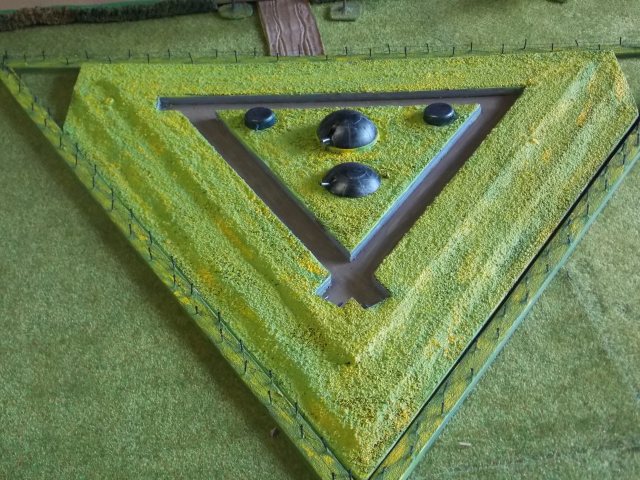
A close up of Fort Evegnée. There were 12 such forts around the city. Six on the east bank and 6 on the west bank of the Meuse. They were all eventually destroyed by German super artillery including the 42cm Big Berthas.
The fort itself was quite a formidable obstacle. Although its main guns had a minimum range of 150cm on the table (they were never intended for the close defence of the fort itself) the fort also had two 5.7” quick firing guns in retractable cupolas which were designed to deter any infantry assaults (each fired 20 rounds a minute of canister and pellets). The fort was surrounded by a stout barbed wire entanglement well within the range of the 5.7” guns and even if an attacking force penetrated that they would have to cope with a ditch which was covered by a total of 6 further 5.7” guns and nobody was likely to survive those.
Outside the fort’s perimeter there were trenches designed to enfilade the approaches to the barbed wire. Finally the fort was in range of its two neighbouring forts who could bring down a barrage of shells onto the roof should the enemy get that far.
The German player wisely decided to give the fort a wide berth and to concentrate upon the Belgian defences outside. This was in fact in compliance with his orders. He had a total of 9 battalions and 6 batteries of field guns plus 2 batteries of field howitzers. The howitzers were ideal for shelling trenches and destroying barbed wire.
Each player was issue with a separate set of rules which differed in certain major details. The Belgian player was unaware of the presence of German howitzers and the German player has no idea of how the fort would be factored into the game. The separate rules created a certain anxiety on both sides which added to the game. The German player decided to advance cautiously to test the Belgian defences and having selected a spot he concentrated his howitzers so as to destroy the barbed wire in front of the slit trenches while his infantry advanced. However he chose not to concentrate all of his batteries to support the attack and the result was a lot of casualties from co-ordinated Belgian machine gun fire.
After a certain number of moves the fort’s guns boomed out and caused numerous casualties to the advancing Germans. Their main effect was to the German player’s morale however as he tried to disperse his force to lessen casualties. In fact the fort’s guns only fired twice as they were giving priority to off table targets.
After 5 moves the German player decided that it would be best to withdraw and maybe to try again under the cover of darkness. So that will be the scenario for the next game.
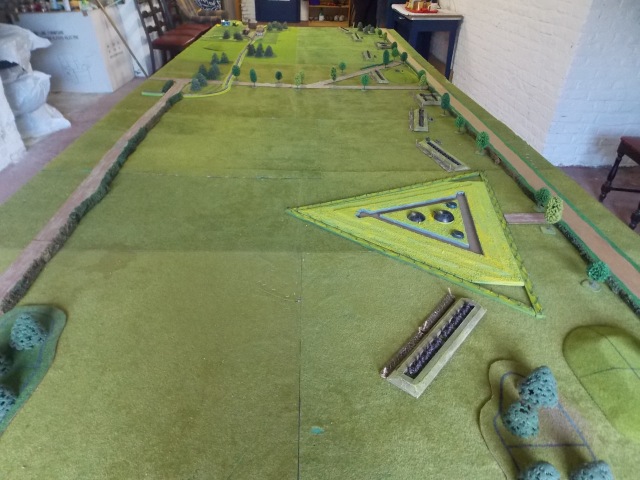
An aerial view showing the scale of the fort on the table. The table is 16 feet long by 6 foot wide.
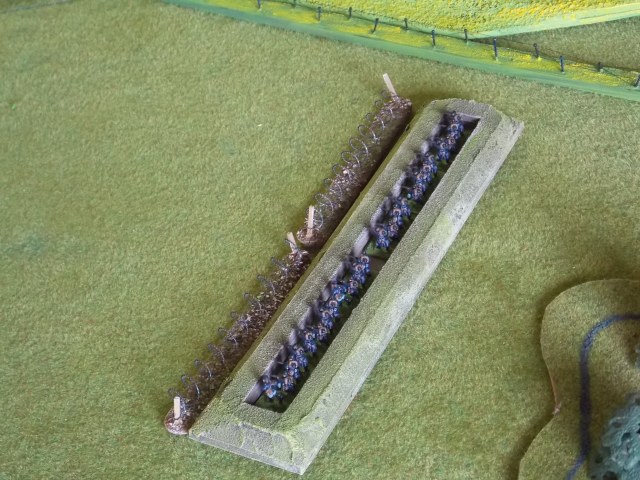
One of the Belgian slit trenches. There were 7 such trenches and two artillery redoubts on the Belgian side of the table.
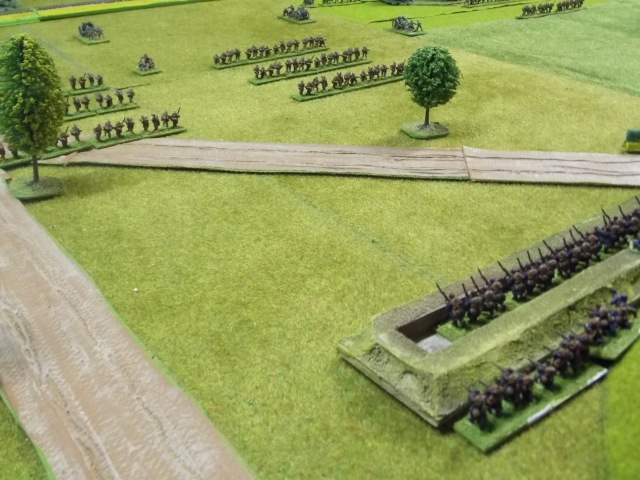
The German advance continues. The Belgian barbed wire in front of their trench has been destroyed by German howitzer fire.

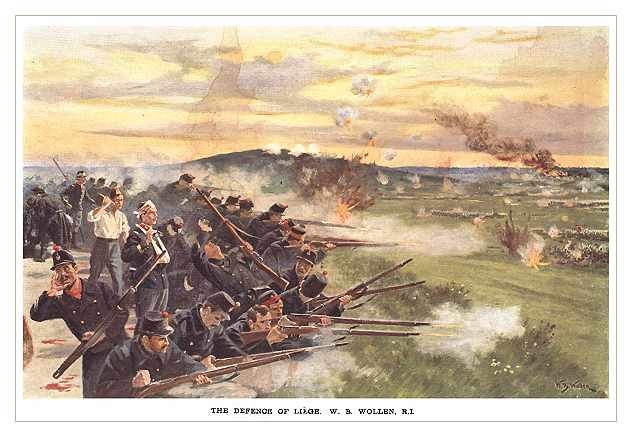
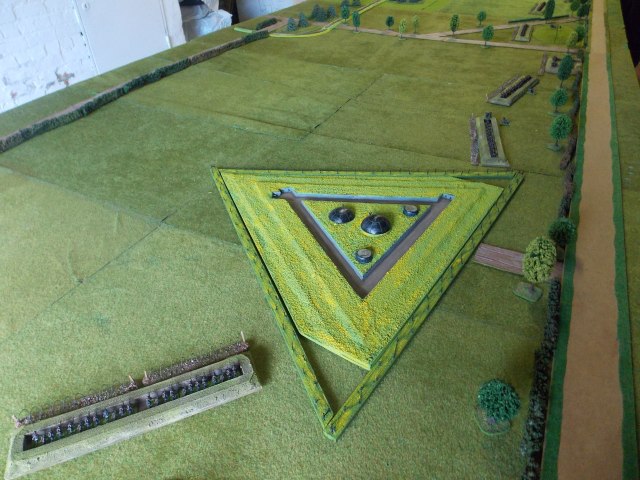
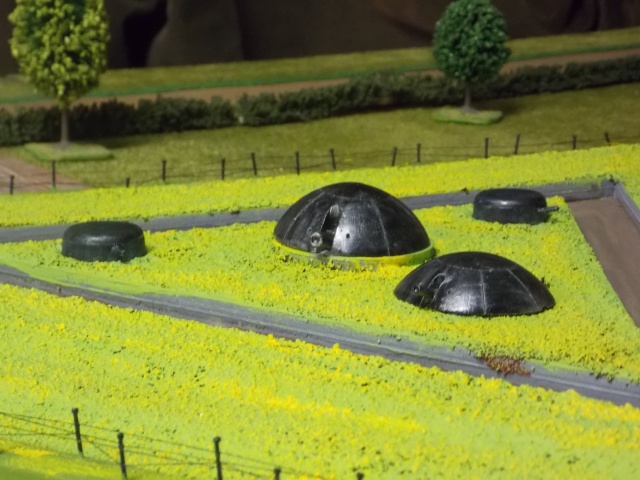
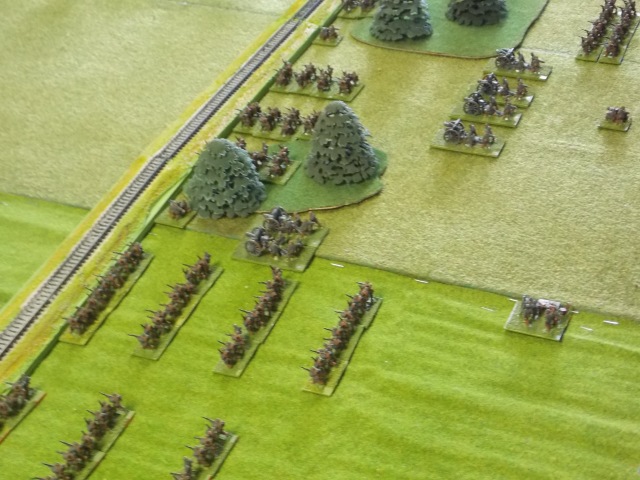
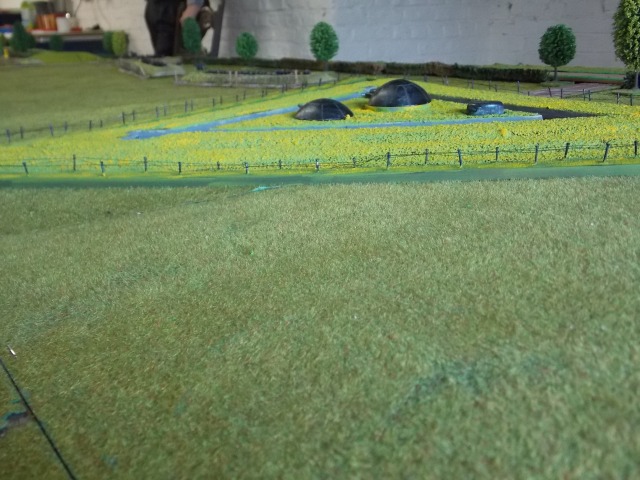
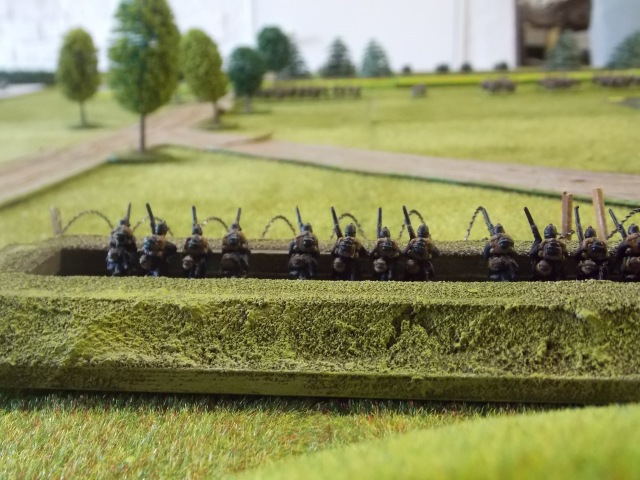
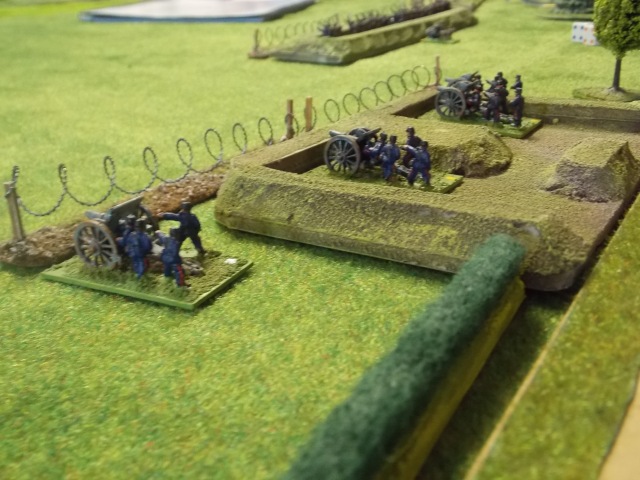
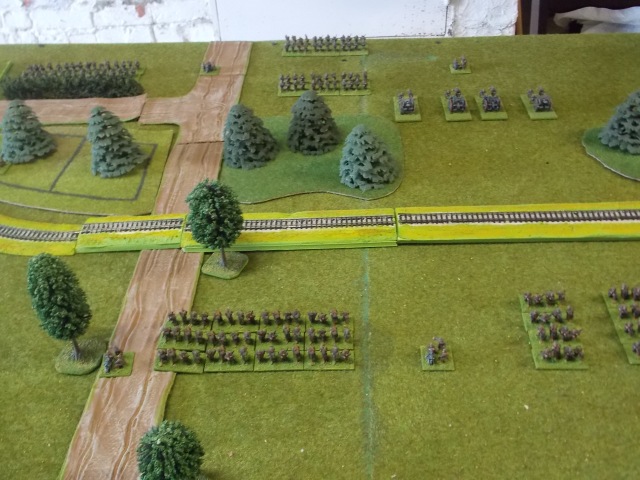
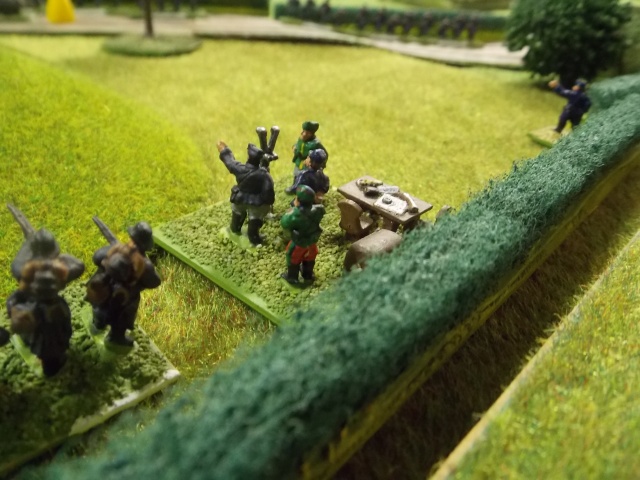
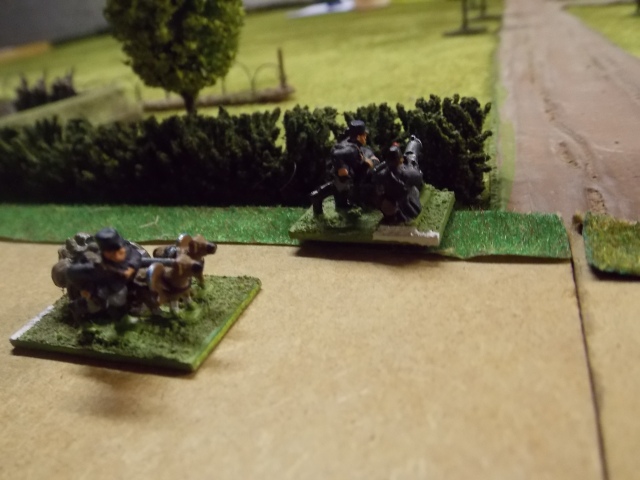
Most impressive! A great report, love the redoubts and the Belgian HQ especially…
Hi Phil
Many thanks for those kind words.
Your own site is an inspiration to us all.
Regards
Well done; like the fort.
Thanks Greg.
The fort was scratch built and we got two games out of it. I have it packed away now for the next centenary in 2114!
Regards